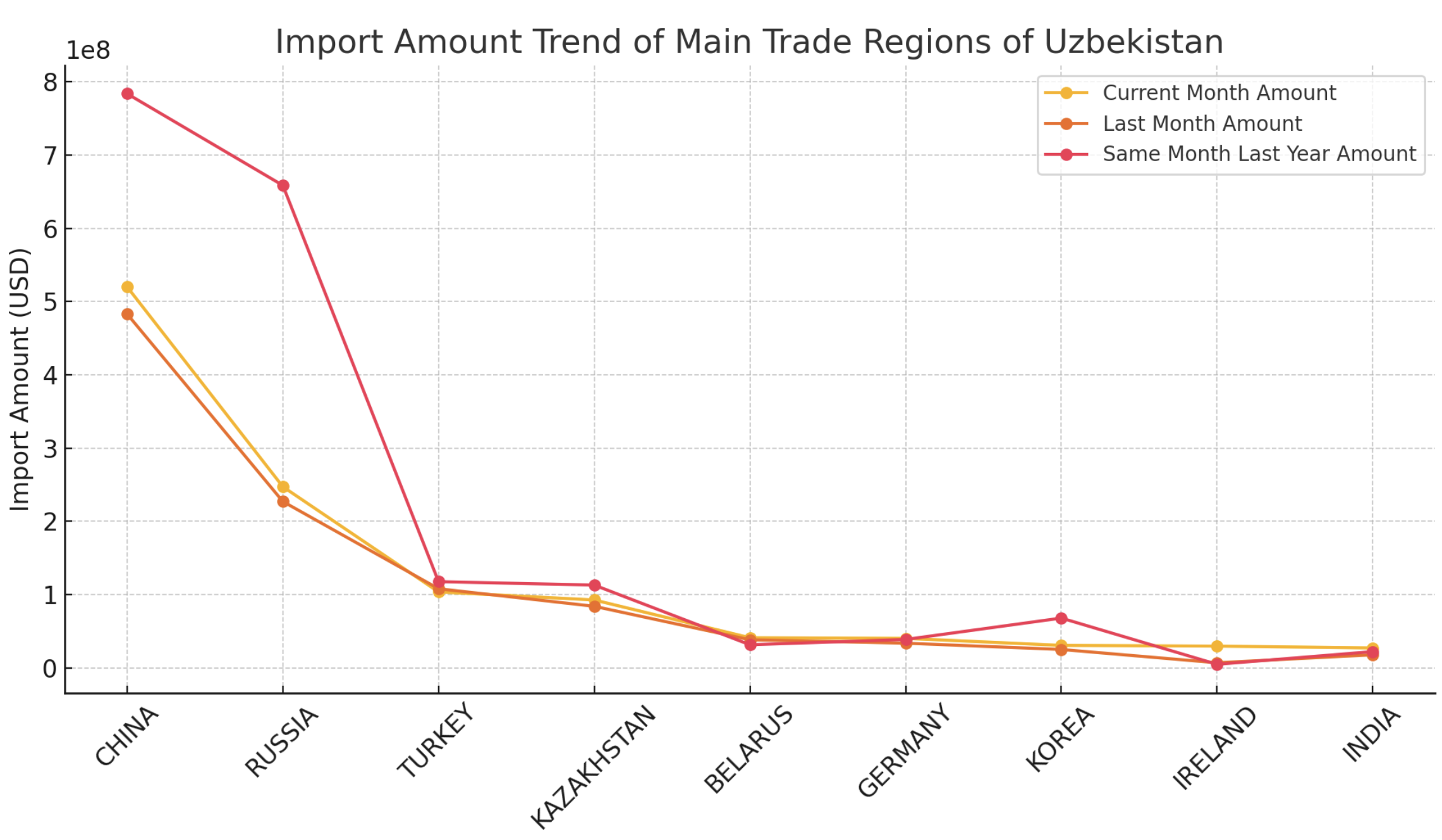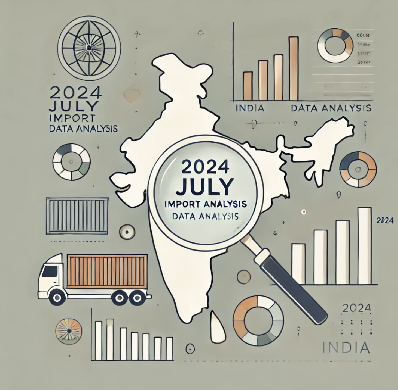Uzbekistan July 2024 Import Data Analysis: Latest Trends in Trade Regions and Product Categories
The customs import data for Uzbekistan in July 2024 reveals some critical shifts and potential trends in the country's trade activities. A detailed analysis of these data points sheds light on Uzbekistan's position within the global supply chain and how domestic demand fluctuations are influencing its import structure. Here are some key insights based on the data.
Overall Import Trends Analysis
In July 2024, Uzbekistan's total import value reached $4.275 billion, representing a month-on-month increase of 17.89%, yet a year-on-year decline of 4.97%. This indicates that while Uzbekistan shows some resilience in the face of global economic uncertainties—such as supply chain pressures and international trade frictions—certain macroeconomic factors like inflation, currency fluctuations, or subdued domestic demand may be restraining import growth.
Notably, despite the decline in import value, the number of importers and suppliers saw slight increases, with year-on-year growth rates of 0.42% and 0.56%, respectively. This suggests that Uzbekistan’s market is gradually diversifying, with more businesses engaging in international trade, although the overall volume of transactions has decreased.
Market Trends in Major Import Categories
Among the different product categories, Books, Newspapers, and Printed Material (HS Code 490700) saw a staggering month-on-month import value increase of 123.89% and a year-on-year rise of 89.38%. This significant growth may be linked to rising domestic demand for cultural and educational materials. Additionally, the increased import volume of printed media might reflect government or institutional investments in information dissemination and educational initiatives.
Petroleum and Mineral Fuels (HS Code 271019) experienced a year-on-year import value growth of 153.99%, despite a slight month-on-month decline. This trend points to strong energy demand in Uzbekistan, possibly driven by industrial expansion or seasonal energy consumption increases. It may also indicate that the country is boosting imports to ensure energy supply stability amid global market uncertainties.
Pharmaceuticals (HS Code 300490) and Perfumes and Cosmetics (HS Code 330210) also showed significant growth, with year-on-year increases of 31.20% and 202.03%, respectively. The rise in pharmaceuticals might be attributed to heightened public health awareness and expanded healthcare resources. Meanwhile, the surge in cosmetics imports likely reflects the growth of Uzbekistan's consumer market and the rising purchasing power of the middle class, alongside evolving consumer preferences.
China's Role in Uzbekistan's Import Market
China remains one of Uzbekistan’s most crucial trading partners. In July, imports from China continued to be dominated by Mobile Phones and Components (HS Code 851713) and Automobiles (HS Code 870360). However, it's worth noting that the volume and value of automobile imports dropped by 51.40% year-on-year, possibly due to market saturation or shifting consumer preferences within Uzbekistan. On the other hand, the significant growth in Battery Imports (HS Code 850760) highlights the potential development of the renewable energy or electric vehicle market.

Trends in Key Trade Regions
Among the major trade regions, China, Russia, and Turkey continue to be vital sources of imports for Uzbekistan. However, the import value from China and Russia has seen significant year-on-year declines, particularly from Russia, where imports fell by a staggering 62.45%. This could be linked to geopolitical changes, sanctions, and the reconfiguration of supply chains. In contrast, although Turkey's import value also dropped, the decrease was less pronounced, indicating that Turkey remains competitive in the Uzbek market.
Import data from Kazakhstan and Belarus shows some resilience, with both countries registering month-on-month increases in import value. This suggests that regional trade links remain strong. Particularly, Belarus saw a year-on-year import value growth of 30.48%, possibly indicating that Uzbekistan is strengthening its trade ties with Belarus in strategic product categories.
Conclusion and Outlook
Overall, the customs import data for Uzbekistan in July 2024 highlights the country's complex dynamics in international trade. While some products and regions have seen a decline in import value, Uzbekistan's market remains active, with a growing trend towards import diversification. NBD Data (www.nbd.ltd) will continue to closely monitor trade developments between Uzbekistan and its key partners, providing businesses with the latest customs data insights to help them seize opportunities and mitigate risks in the global market.
Disclaimer: The data and analysis in this report are derived from NBD Data's statistical results and may contain some errors. Users should verify these data independently. NBD Data is not responsible for any consequences arising from the use of this report's information.
For more detailed data, please visit NBD Data's official website: en.nbd.ltd




